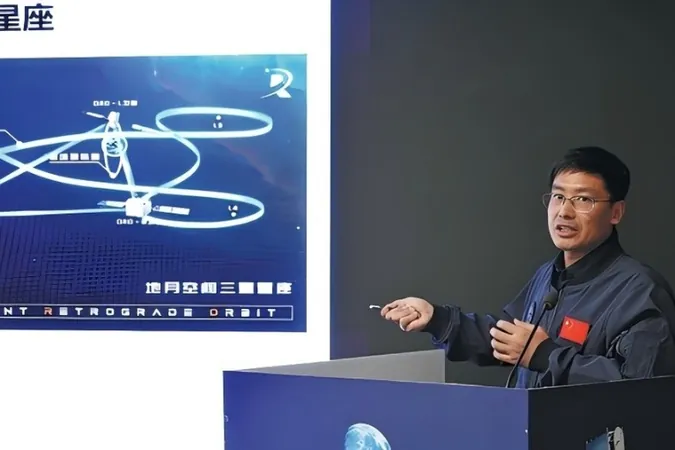
China Rockets Ahead with Revolutionary Three-Satellite System in Space!
2025-04-18
Author: Nur
A Game-Changer in Deep-Space Exploration
In a groundbreaking achievement, China has launched the world's first three-satellite constellation into the distant retrograde orbit (DRO) of the Earth-moon system, marking a significant leap in its deep-space exploration capabilities. This milestone was revealed during an academic symposium in Beijing.
Connecting the Dots in Space
The newly launched satellites, DRO-A and DRO-B, have successfully linked up with the earlier deployed DRO-L satellite in low-Earth orbit, creating a cohesive network after an ambitious voyage covering 8.5 million kilometers. This constellation is set to transform how we explore the cosmos.
The 'Natural Spaceport' for Future Missions
According to Wang Wenbin, a leading researcher from the Chinese Academy of Sciences (CAS), this advancement places China at the forefront of utilizing DRO as a 'natural spaceport' for future lunar and deep-space missions. With its unique position, the DRO allows spacecraft to access Earth-moon space with unprecedented energy efficiency while ensuring stable positioning.
Building the Future of Space Infrastructure
This pioneering satellite system serves as vital groundwork for ongoing human activities within the Earth-moon sphere. Potential future projects could include constructing lunar bases, developing deep-space observatories, and establishing support stations for interplanetary missions, all facilitated by this satellite network.
Navigational and Logistical Revolution
Wang emphasized that the constellation will offer essential navigation, communication, and logistical support—akin to building harbors during the Age of Exploration. The implications for space travel are enormous.
Overcoming Technical Hurdles
Despite facing substantial technical challenges—including a rocket malfunction during the launch—the team showcased remarkable resilience. Engineers orchestrated multiple emergency adjustments over four months, ultimately steering the mission towards success.
Innovative Approaches Reducing Fuel Use
Zhang Jun, chief engineer at the Innovation Academy for Microsatellites, elaborated on their low-energy transfer strategy, which allowed the satellites to use just 20% of the fuel usually required for such missions, underscoring their commitment to sustainability in space exploration.
Pioneering Innovations in Satellite Technology
This constellation has also validated cutting-edge techniques, including the world’s first K-band inter-satellite communication covering 1.17 million kilometers and a unique satellite-to-satellite tracking system.
A New Era Awaits in Space Exploration!
Since achieving full operational status in late August, this three-satellite system has conducted numerous scientific experiments confirming the DRO's potential as a launchpad for future lunar bases and interplanetary missions. Wang Qiang, deputy director of the CSU, stated that these advancements drastically lower barriers to prolonged space exploration, paving the way for a new era of discovery.





 Brasil (PT)
Brasil (PT)
 Canada (EN)
Canada (EN)
 Chile (ES)
Chile (ES)
 Česko (CS)
Česko (CS)
 대한민국 (KO)
대한민국 (KO)
 España (ES)
España (ES)
 France (FR)
France (FR)
 Hong Kong (EN)
Hong Kong (EN)
 Italia (IT)
Italia (IT)
 日本 (JA)
日本 (JA)
 Magyarország (HU)
Magyarország (HU)
 Norge (NO)
Norge (NO)
 Polska (PL)
Polska (PL)
 Schweiz (DE)
Schweiz (DE)
 Singapore (EN)
Singapore (EN)
 Sverige (SV)
Sverige (SV)
 Suomi (FI)
Suomi (FI)
 Türkiye (TR)
Türkiye (TR)
 الإمارات العربية المتحدة (AR)
الإمارات العربية المتحدة (AR)